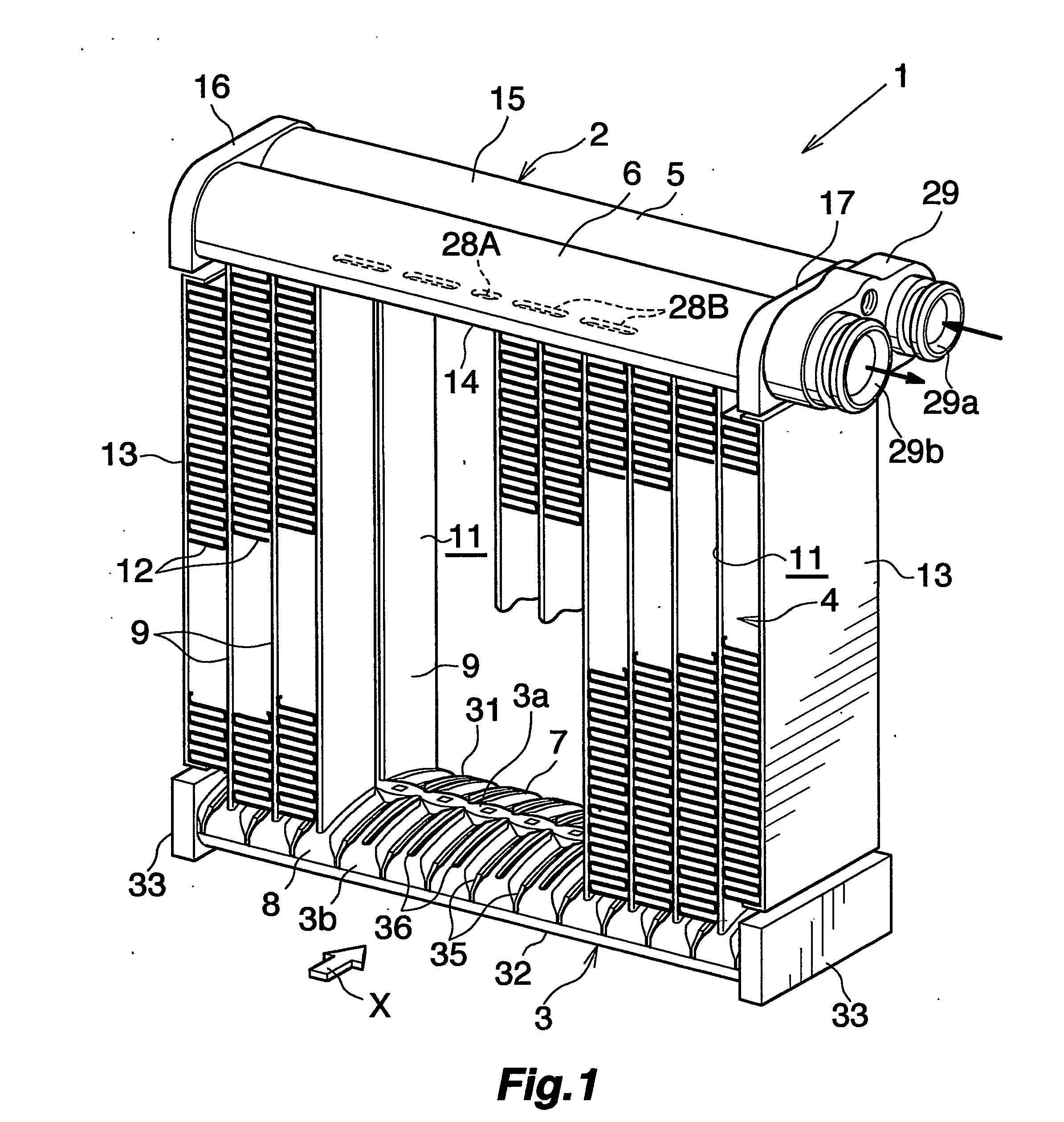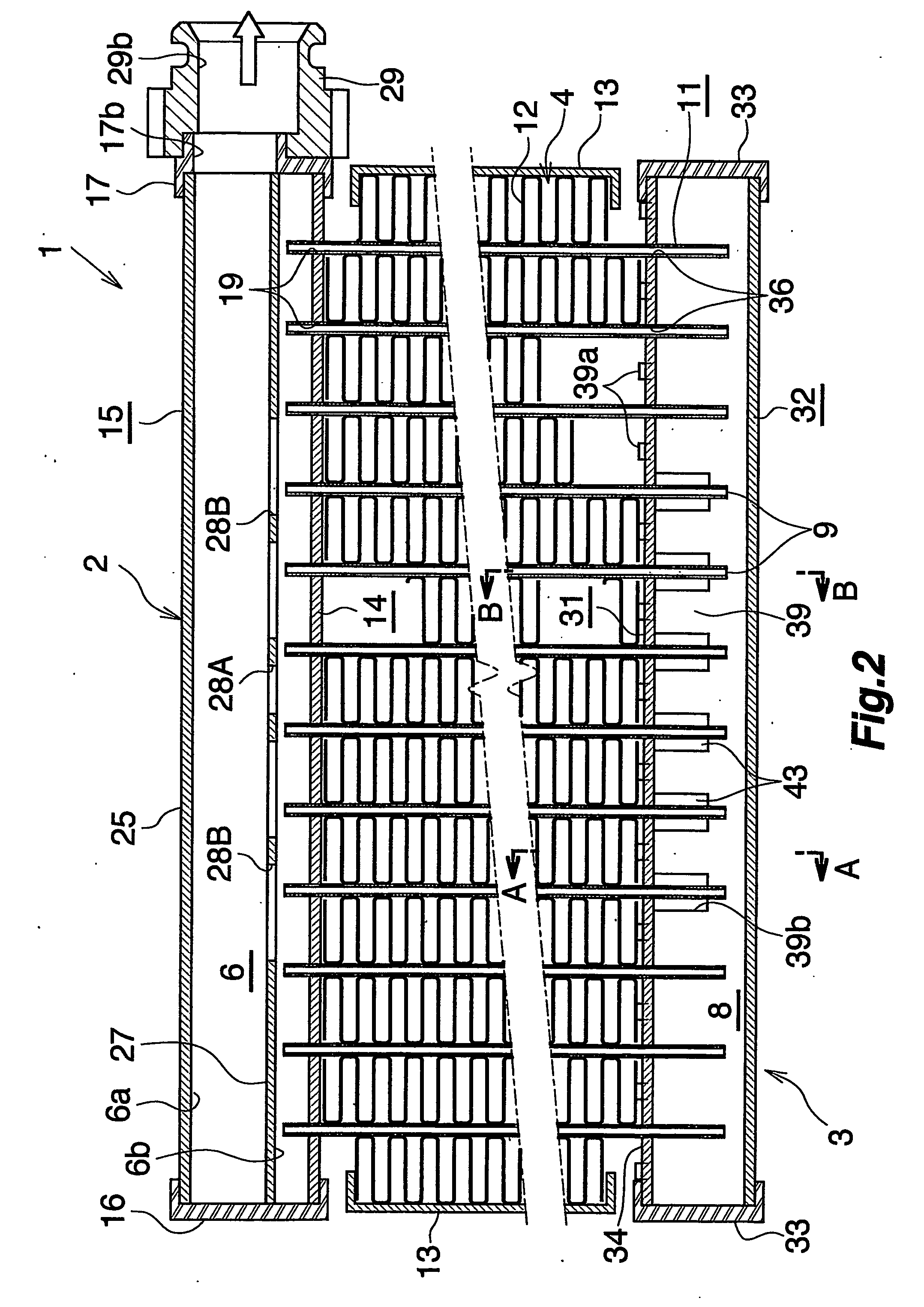Heat exchanger
a technology of heat exchanger and heat exchange core, which is applied in the direction of indirect heat exchanger, lighting and heating apparatus, refrigeration components, etc., can solve the problems of reducing the flow rate of refrigerant, uneven air passing through the heat exchange core at different locations, and so as to reduce the number of components. , the effect of reducing the number of components
- Summary
- Abstract
- Description
- Claims
- Application Information
AI Technical Summary
Benefits of technology
Problems solved by technology
Method used
Image
Examples
example 1
[0164] The evaporator shown in FIGS. 10 to 13 was used. The heat exchange core 4 measured 255 mm in lateral width and 38 mm from front to back, the heat exchange tubes 9 of each tube group 11 were 26 in number, 1.4 mm in height and 17.7 mm in width, and the corrugated fins 12 were 3.3 mm in fin pitch and 8 mm in height. The refrigerant passing holes 81 in the flow dividing resistance plate 27 were 13 in number. The temperature distribution of the air forced out from the front side of the heat exchange core 4 was measured according to JIS D1618. FIG. 15 shows the result.
PUM
 Login to View More
Login to View More Abstract
Description
Claims
Application Information
 Login to View More
Login to View More - R&D
- Intellectual Property
- Life Sciences
- Materials
- Tech Scout
- Unparalleled Data Quality
- Higher Quality Content
- 60% Fewer Hallucinations
Browse by: Latest US Patents, China's latest patents, Technical Efficacy Thesaurus, Application Domain, Technology Topic, Popular Technical Reports.
© 2025 PatSnap. All rights reserved.Legal|Privacy policy|Modern Slavery Act Transparency Statement|Sitemap|About US| Contact US: help@patsnap.com



